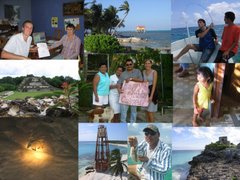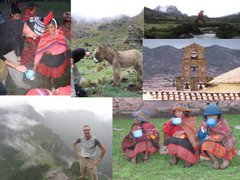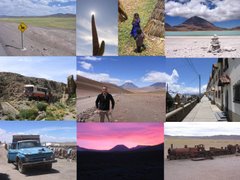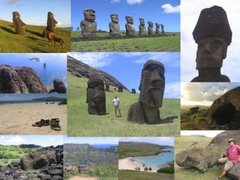
Found my way to San Ignacio at the weekend. I’d heard a lot about this little town in the hills and it had just as much charm as I’d been promised. Plus I got my own room with a balcony to sit out on, for £7.
San Ignacio is the base for some of the most unusual and adventurous tours in Belize. I did two of them at the weekend.
On Saturday I had an unforgettable trip into what can seriously and soberly be described as ‘another world’. Actun Tunichil Muknal is the Cave of the Stone Sepulcher, a sacred Mayan site described by our guide as one of the top 10 caves in the world. I’m not sure exactly who compares caves (and how?), but by any measure, this was an awe inspiring experience.
San Ignacio is the base for some of the most unusual and adventurous tours in Belize. I did two of them at the weekend.
On Saturday I had an unforgettable trip into what can seriously and soberly be described as ‘another world’. Actun Tunichil Muknal is the Cave of the Stone Sepulcher, a sacred Mayan site described by our guide as one of the top 10 caves in the world. I’m not sure exactly who compares caves (and how?), but by any measure, this was an awe inspiring experience.
 Going Underground. Nervous, me?
Going Underground. Nervous, me?After a long trek through the rain-forest, the adventure proper starts with a plunge into a 20-foot-deep pool at the cave entrance. This is followed by almost a mile of squeezing through gaps, wading or swimming across underground pools, and scrambling up rock-piles and through giant caverns.


Filming for Alien V starts any day now.
It was hard to say what was most impressive – the adventure side of the experience; the size, beauty and atmosphere of the cave or; the impressiveness of the Mayan pottery and ancient remains. The whole thing is made even more unnerving by the sightless catfish swimming around in the water near your feet, while pure white millipedes and other unusual insects crawl across the walls and large bats flit overhead.

Our guide describes how the Mayans made beautiful pottery, just to be brought into the cave and ritually smashed, in sacrifice to the gods.
But what makes the cave world-famous is those human remains. I found it difficult to get my head round the fact that I was entering a tomb, untouched by humans for more than a thousand years. The cave was rediscovered in the 70s, explored by scientists in the 80s and opened to visitors about ten years ago. There are virtually no concessions to tourists, with just one small ladder at a particularly tough climb, and no other safety precautions.
Even more surprisingly, 95% of the original artefacts have been left lying in the cave as they have been for more than a thousand years. At several points the guide said things like, “watch you don’t stand on those pots just to your left there”!! Bizarre…
 The skull of a teenager, sacrificed to the gods. The skull looks alien, because he Mayan practise was to encourage deformity in sacrificial victims. A board would have been strapped to the child’s forehead at a young age, causing the skull to grow deformed. The skull has become calcite-encrusted over hundreds of years.
The skull of a teenager, sacrificed to the gods. The skull looks alien, because he Mayan practise was to encourage deformity in sacrificial victims. A board would have been strapped to the child’s forehead at a young age, causing the skull to grow deformed. The skull has become calcite-encrusted over hundreds of years.…and hard to see the experience being sustainable as the cave becomes more famous and popular. Now that National Geographic have visited, it can only be a matter of time before things get roped off and protected by glass boxes.

But for the moment, it’s just a fantastic adventure, the climax of which comes in the deepest, darkest corner of the cave. After wading, swimming and climbing through a thousand feet of gullies and caverns the guide asks for all our headlamps to be turned off. After a few moments of utter darkness and silence, he shines a torch onto the remains of the Stone Sepulcher herself, the complete skeleton of a young woman, a princess in the Mayan world, who was sacrificed to the gods some 1,200 years ago.
 Actun Tunichil Muknal, Cave of the Stone Sepulcher
Actun Tunichil Muknal, Cave of the Stone Sepulcher
 Actun Tunichil Muknal, Cave of the Stone Sepulcher
Actun Tunichil Muknal, Cave of the Stone Sepulcher







No comments:
Post a Comment